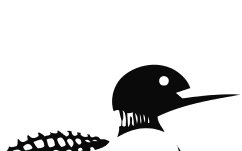
An encrypted chat allegedly between Balkan drug traffickers shows them bragging about having exclusive rights to smuggle cocaine alongside bananas in shipping containers exported by the Ecuadorian president’s family firm.
A confidential Croatian prosecution document shows two people, using the encrypted messenger platform Sky ECC and identified only by anonymous PIN numbers, boasting in a February 2021 chat that “no one but them” was allowed to load cocaine in containers shipped by the Noboa Trading Co TCN S.A.
Noboa Trading is part of Noboa Corporation, a sprawling business empire that produces bananas under the Bonita brand and is run by the family of Ecuador President Daniel Noboa. Noboa Trading Co. did not respond to questions from reporters, and the office of President Noboa declined to comment.
In a months-long investigation, reporters from Serbian outlet KRIK, global investigative reporting group the Organized Crime and Corruption Reporting Project (OCCRP) and the
Investigative Journalism Bureau
were able to match specific drug shipments mentioned in chats between the alleged traffickers to real-life banana shipments made by Noboa Trading.
Crucially, reporters were also able to decipher just who, in the criminal underworld, was alleged to receive the shipments involved.
While the Croatian documents showed only anonymous PINs, a Serbian indictment exclusively obtained by KRIK let them identify one of the alleged interlocutors as Nikola Đorđević, who Serbian prosecutors say is an organized crime figure currently wanted in Serbia in an unrelated cocaine smuggling case. Đorđević remains at large and Serbian prosecutors ordered an international warrant for his arrest in May 2023.
Earlier this year Ecuador’s Ombudsman claimed that as much as 70 per cent of the drugs consumed in Europe are now exported from Ecuador, according to an interview with Deutsche Welle.
The new disclosure comes at an awkward time for President Noboa, who has pitched himself as an anti-drug crusader, and who has called on U.S. and European armies to join his “war” against what he called “narco-terrorists.”
“The revelations expose a massive conflict of interest for a president who has based his entire political career on a narrative of combating violence and curbing the corrosive influence of drug cartels,” said Jake Johnston, director of international research at the Centre for Economic Policy Research.
In March of this year, Colombian magazine Raya reported that police seized nearly 700 kilos of cocaine from three Noboa Trading banana containers at the Ecuadorian port of Guayaquil between 2020 and 2022.
During a presidential debate earlier this year, opposition candidate Luisa González repeatedly questioned President Noboa, who was then seeking re-election, over Raya’s allegations.
“Investigate Noboa Trading, where drugs are exported in banana boxes from Mr. Daniel Noboa’s company to Croatia and Italy,” González said of the president’s family firm.
President Noboa rebuffed the accusations, saying the company had cooperated in each case and Noboa Trading officials had been exonerated “from any illicit activity.”
He also denied having any personal involvement with the company.
“I am not the owner, but members of my family are in that company,” he said.
Bananas and cocaine
Although the allegations and chat logs are unclear exactly how Nikola Đorđević and his associates would have accessed the containers of a major fruit exporter like Noboa Trading, there is evidence that the claim made on the encrypted chat wasn’t just an empty boast.
The chats, which prosecutors say involve the alleged traffickers, refer to three specific shipments of cocaine that were expected by date, ship name and container number. Reporters matched the details shared in the discussions to real Noboa Trading banana shipments using shipping records and export data.
For example, they mentioned a massive 430-kilogram load of cocaine hidden in container MEDU9747725, which they said left Ecuador on January 25. By consulting shipping logs and export data, reporters confirmed that Noboa Trading had indeed shipped that exact container, on that exact date.

All three of the banana shipments, which were examined in detail by reporters from KRIK, OCCRP and the IJB, were sent from Guayaquil, Ecuador aboard the Liberian-flagged container ship MSC Mirella in late 2020 and early 2021, before being transferred to other ships.
In total, police say they contained 535 kilos of cocaine with a street value of at least 26 million euros. The last of the shipments, allegedly containing 60 kilos of cocaine, was seized by Croatian authorities in early March, after being offloaded in Ploče, a port on the Adriatic Sea, according to the Croatian prosecution document.
While Đorđević’s group allegedly dealt with loading the cocaine at the source, Croatian prosecution files say that a different Balkan drug gang took responsibility for offloading the drugs from the Noboa Trading containers once they arrived in Croatia.
That group was allegedly led by Petar Ćosić, who is currently on trial in Croatia for organizing and leading a criminal organization, aggravated murder, and smuggling hundreds of kilograms of cocaine from Ecuador, including some inside Noboa banana containers. (Ćosić did not respond to a request for comment sent to his lawyer.)
Shipping records show Firma Leon Van Parys N.V., a fruit company registered in Antwerp, which is the largest banana purchaser for the Croatian market, was a consignee in one shipment and the notified party in the other two. The company did not respond to a request for comment.
Shipping firm MSC said it remains firmly opposed to the cocaine trade and continues to intensify its security efforts.
“In recent years, the liner shipping industry has dramatically improved its ability to detect shipments of illegal drugs like those referenced in the report thanks to advances in technology and effective partnerships with customs authorities,” MSC said in an emailed response to questions. “The picture today is very different.”
Tainted supply chains
The new allegations could provide rare and intimate details of the growing collaboration between criminal groups trafficking cocaine to Europe, and demonstrates how easily supply chains for everyday goods can be compromised.
The cooperation appears to be part of a wider trend towards modular criminal supply chains, according to Anna Sergi, an organized crime expert and professor of sociology at the University of Bologna.
In this case, one set of alleged Balkan smugglers arranged loading the drugs into containers in Ecuador, while another was responsible for offloading them in Croatia, according to the allegations in various legal documents.
“Groups specialize in origin stuffing, maritime logistics, and local distribution and then sell or barter those capabilities,” Sergi told OCCRP.
And the alleged criminal hierarchy of the group that police say took responsibility for the cocaine in Croatia may not end with Ćosić.
By cross-referencing Croatian court papers with additional documents from a case in Serbia, OCCRP reporters found indications in court documents and chat logs that Ćosić was taking orders via Sky ECC from a much bigger criminal figure: convicted Montenegrin drug lord Darko Šarić.
Šarić, already a convicted cocaine smuggler, is currently on trial in Serbia for money laundering and jointly organizing four assassinations, among other allegations.

Serbian prosecutors have accused Šarić of continuing to manage a criminal organization from behind bars using Sky ECC.
Šarić denies these allegations. His lawyer, Dalibor Katančević said that Šarić’s cell has been searched countless times and no evidence had been found of prohibited means of communication.
“I am certain that in all of the prosecution and court files you referred to, you could not have found any undisputed evidence that Darko Šarić is connected to any of the individuals mentioned, nor to any of the alleged shipments,” Katančević said.
While there is no evidence that Noboa Trading was aware of contraband allegedly hidden in its banana containers, Sergi said the findings suggest systemic vulnerabilities at Ecuador’s main port: weak controls, opaque contracting of third-party packers, and informal gate practices that create opportunities for capture by criminals.
“[The decrypted chat] does not by itself prove company management’s involvement,” she said. “But it does strongly indicate that someone with control over the physical container-stuffing and departure process is complicit or has been captured by criminals.”
President Noboa and the Noboa Trading Co.
During the presidential debate earlier this year, President Noboa said he was not personally involved with the banana company sharing his name, but company records and the presidency’s own website show historical ties with him, and ongoing links to his family.
President Noboa’s father Alvaro Noboa, who unsuccessfully ran for the Ecuadorian presidency five times, leads both Noboa Corporation and Noboa Group, the umbrella companies for a vast business conglomerate that includes Noboa Trading, according to the websites of both Alvaro Noboa and the company.
Before becoming president, Daniel Noboa worked at Noboa Corporation, becoming the youngest shipping director in the company’s history, according to the website of the presidency.
Roberto Jorge Ponce Noboa, cousin of Alvaro Noboa, was CEO of Noboa Trading at the time the three shipments identified by OCCRP and KRIK arrived in Croatia, according to company documents and local media.
Noboa Trading is owned by two other companies: majority shareholder Lanfranco Holding S.A., registered in Panama, and Ecuadorian firm Inmobilaria Zeus S.A.
Because Panama allows companies to keep their shareholders anonymous, it is not possible to determine who currently owns Lanfranco Holding, but a 2015 document in the Pandora Papers leak shows that in 2015, Alvaro Noboa transferred ownership of the firm to two of his sons, Daniel and Juan Sebastian.
As of 2021, Inmobiliaria Zeus was owned by other companies registered in the Bahamas and Panama.
While its majority owner is hidden, among Inmobiliaria Zeus’s shareholders in 2021 were four companies and 12 individuals, including President Noboa’s aunt, Isabel Noboa Pontón, and several cousins.
Both Lanfranco Holding and Inmobiliaria Zeus also own other firms linked to the Noboa family. Inmobiliaria Zeus , for example, is a shareholder of Noboapallets S.A., while Lanfranco Holding is a shareholder of 45 other agricultural, shipping, packing and fertilizer companies connected to the Noboa family.
Though a Noboa Trading contractor responsible for conducting anti-narcotics inspections has been subject to judicial proceedings at least four times, the person has never been prosecuted.
“If the company cooperates, and alerts the National Police if it has some kind of contamination, that means it is cooperating,” President Noboa previously said.
As the world’s largest banana exporter, shipments of the yellow fruit through Ecuador’s busy ports like Guayaquil are an attractive target for cocaine traffickers.
Though Belgium, the Netherlands, and Spain, remain the major entry points for cocaine into Europe, improved interdiction has prompted traffickers to increasingly use secondary smaller ports.
Just as Balkan gangs have gained a growing foothold in the trade, so has Croatia, with its six commercial ports, become a more popular destination.
As Ecuador’s fourth-largest exporter of bananas, chat logs indicate Noboa Trading has found its containers at the centre of this phenomenon.
Between 2014 and 2024, the firm and its associated brand name exported $190 million of the fruit to Croatia, one of its key markets.
“The more you send to that region, the greater likelihood that the containers are going to be contaminated,” said Bruce Goldberg, a former U.S. Drug Enforcement Administration agent who worked in Ecuador for half a dozen years.
“And Ecuador sends bananas everywhere. Like everywhere.”
The Investigative Journalism Bureau (IJB) at the University of Toronto’s Dalla Lana School of Public Health is a collaborative investigative newsroom supported by Postmedia that partners with academics, researchers and journalists while training the next generation of investigative reporters. Additional reporting contributed by the Organized Crime and Corruption Reporting Project.
Our website is the place for the latest breaking news, exclusive scoops, longreads and provocative commentary. Please bookmark nationalpost.com and sign up for our newsletters here.




















